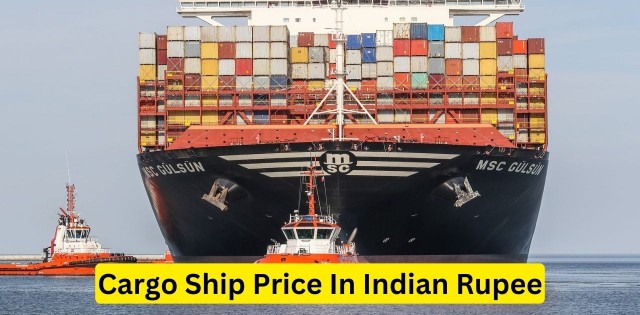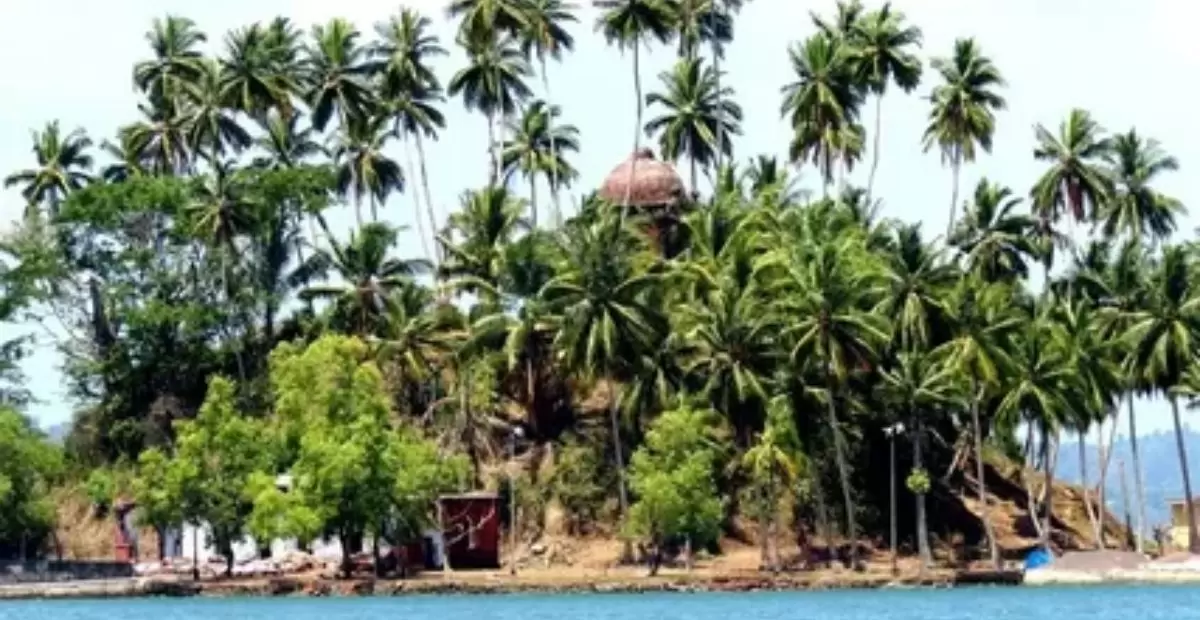The shipping industry plays a vital role in India’s economy and trade. Cargo ships are essential for transporting goods and commodities across the seas. The cost of purchasing and operating cargo ships in India has risen in recent years due to fluctuating global oil prices and rising labour costs. A new medium-sized cargo ship typically costs 800-1200 crore Indian rupees.
Larger vessels can cost over 2000 crore rupees. Operating expenses like fuel, maintenance, and crew salaries add to the costs. The high capital and operating costs of ships pose challenges for Indian shipping companies. However, the Indian government provides subsidies and incentives to promote growth in this strategic sector. Owning and operating cargo ships involves significant investments in hundreds of crores of rupees.
Cargo Ship Price In Indian Rupees
- The average cost of a brand-new medium-sized cargo ship in India is between 800-1200 crore. That’s between $100 and $150 million in US dollars.
- Larger cargo ships can cost over 2000 crore rupees or around USD 250 million.
- Prices vary based on ship size, capacity, features, shipyard location, etc. Larger and more advanced ships cost more.
- Operating expenses like fuel, maintenance, crew salaries, etc., add to the overall costs of owning and running a cargo ship.
- Fluctuating global oil prices directly impact fuel costs, a significant operating expense.
- The Indian government provides subsidies and incentives to promote growth in the strategic shipping sector. But costs are still high.
- Given the high capital and operating costs, owning and operating cargo ships in India involves investments of hundreds of crores of rupees.
- The costs have risen in recent years due to increased labour costs, regulations, fluctuations in global markets, etc.
- However, a robust shipping industry is key for India’s international trade and commerce.
Here Is A More Detailed Breakdown Of The Typical Costs Involved In Purchasing And Operating A Cargo Ship In India?
- Purchase Price:
- Small cargo ship (<10,000 DWT) – Rs 100-250 crore
- Medium-sized cargo ship (10,000 – 50,000 DWT) – Rs 250-800 crore
- Large cargo ship (>50,000 DWT) – Rs 800-2000+ crore
- Import Duties & Taxes:
- Basic customs duty – 10%
- IGST on imports – 12%
- Additional taxes and port fees – 5-10%
- Operating Costs:
- Fuel – Rs 50-150 crore per year
- Port fees – Rs 5-15 crore per year
- Insurance – Rs 5-10 crore per year
- Staff/crew salaries – Rs 5-15 crore per year
- Maintenance & repairs – Rs 10-30 crore per year
- Financing Costs:
- Interest on loans taken to purchase ship – 10-15% per year
So, the total cost of ownership can range from a few hundred crores for a small cargo ship to over Rs 1000 crore for a large boat over its lifespan. The ongoing operating costs also add up to hundreds of crores of rupees annually.
Ship Size and Type: The Price Anchors
You’re right – the size and type of ship are the main factors that anchor the pricing. Here’s some more detail:
- Size (DWT capacity): This is the biggest determinant of base price. The larger the ship, the higher the price.
- Small size (<10,000 DWT) – Rs 100-250 crore
- Medium size (10,000 – 50,000 DWT) – Rs 250-800 crore
- Large size (>50,000 DWT) – Rs 800-2000+ crore
- Types of Ships:
- Bulk carriers (ore, coal etc) – Lower cost
- Container ships – Higher cost due to more complex engineering
- Oil tankers – Most expensive due to volatile/hazardous cargo
- Age of Ship: Brand new ships cost the most. Secondhand shops are 30-40% cheaper.
- Shipbuilding Country:
- Ships built in India – Lower cost
- Imported ships – Higher cost due to import duties
- Technology: More advanced engines, navigation and other technologies increase costs but improve efficiency.
- Fuel Type: Ships capable of using cheaper fuels like LNG cost more upfront but save on fuel costs.
Age and Condition: The Unseen Factors
You make an excellent point – the age and condition of the ship also significantly impact the pricing and total cost of ownership, even though they may not be apparent at first glance. Here are some key factors:
- Maintenance costs increase as ships age, especially after 10+ years of service. Annual maintenance and repair bills can be 20-30% higher for older ships.
- Technical reliability and performance decline with age due to component wear and tear. This leads to higher operating costs.
- Older ships typically have poorer fuel efficiency, leading to higher annual fuel bills.
- Compliance with changing emission norms gets more complicated with older ships, leading to upgrade costs.
- Insurance premiums tend to be higher for ageing ships.
- Resale value and salvage value decline rapidly as ships age. A 15-year-old ship may sell for only 25% of its original price.
- Overall productivity and earning capacity are lower for ageing ships.
So, while an older, secondhand ship may be cheaper to purchase, its total cost of ownership over the remaining years may be similar or even higher than a pricier but newer ship.
Proper assessment of age and technical condition is vital before purchase. Comprehensive repairs and overhauls are often needed for used ships. Choosing the correct age ship is critical to optimizing total lifetime costs.
Shipping Routes: Charting the Priced Path
- Longer voyage routes require more fuel and store capacity, increasing ship size and price.
- Harsh weather routes require sturdier construction and cost more. E.g., ships designed for North Atlantic routes.
- Ships built for transiting the Panama Canal have size and design restrictions, limiting cargo capacity and earnings.
- Ships deployed on fixed regional routes are cheaper than those operating worldwide voyages.
- Complex port operations like Hamburg, New York, etc, need specialized ship handling capabilities, costing more.
- Ships meant only for inland waterways and rivers can be something other than ocean-worthy and are cheaper.
- The lack of repair facilities in remote routes increases the need for redundancies and onboard spares.
- Piracy-prone areas require security arrangements and insurance premiums.
Optimally designed ships tailored for specific route requirements tend to have lower overall costs. However, boats with global operational flexibility command higher prices despite higher operating costs.
The planned sailing route is a significant determinant of cargo ships’ design, features, size and price.
Market Demand: The Price Oscillator
- High growth and accelerating world trade lead to high demand and prices for ships, as seen before 2008.
- Oversupply of ships, often driven by excessive orders during boom periods, dampens prices, as seen in 2011-16.
- Disruptions like trade wars and pandemics lead to market uncertainty and a fall in ship prices.
- Imbalances in trade flows globally cause changes in regional demand and ship prices.
- Fluctuating commodity and oil prices positively or negatively impact shipping, affecting pricing.
- Exchange rate movements make importing ships cheaper or costlier.
- Government policies like export incentives, tariffs and taxes influence shipping demand and prices.
- Innovations and growing regulations cause new shipbuilding cycles and dampen non-compliant older ships’ prices.
- Interest rates impact financing costs associated with new shipbuilding shipbuilding orders.
So ship prices fluctuate in sync with macroeconomic cycles, market forces and technological changes – timing purchases right helps buyers optimize costs.
In summary, volatile shipping market dynamics cause cargo ship pricing to oscillate, often in alignment with broader economic trends.
Conducting Market Research
- Analyze trade data to identify high-growth routes and cargo types to inform ship size and type selections.
- Research vessel supply/demand dynamics in target regions – oversupply can depress prices.
- Evaluate macroeconomic trends, trade policies, and commodity demand forecasts to assess future conditions.
- Connect with shipyards to learn about new vessel launch pipelines that could impact pricing.
- The study used vessel listings to gauge price ranges for different types, sizes, and ages.
- Track price indexes over time to identify trends and cycles.
- Review freight rate forecasts to estimate earning potential and payback periods.
- Consult shipping industry analysts to get insights on market forces at play.
- Survey other ship owners on maintenance and operating costs to build realistic budgets.
- Assess the impact of emerging regulations and technologies on vessel designs and supply demand.
- Consider hiring a maritime industry consultant as an objective advisor.
Conducting diligent market research across these areas will help develop evidence-based assumptions on future conditions to make informed purchase decisions and negotiate optimal pricing.
Consider Total Cost of Ownership
- Calculate operating costs over the lifespan based on route, cargo, crew needs, etc. Fuel, maintenance and port costs can be sizeable.
- Factors in financing costs include loan interest rates and repayment terms.
- Estimate periodic dry docking costs for inspections and overhauls.
- Account for insurance, registration, and classification society fees annually.
- Consider the costs of retrofits for emerging regulations like emission norms.
- Weigh costs of maintaining reserve funds for off-hire periods.
- Evaluate ownership structuring options like leasing to optimize tax and cash flows.
- Account for working capital needs for inventory, receivables, etc.
- Project realistic resale or salvage value at the end of ownership to estimate total outflows.
- Run different scenarios for freight rate forecasts, interest rate changes, etc.
While complex, developing a lifetime cost model for factors under and beyond your control is vital for long-lived assets like ships. Comparing the total cost of ownership between purchase alternatives provides the complete picture for decision-making.
Challenges in Cargo Ship Pricing
- The highly customized nature of ships makes precise comparisons difficult.
- Opaque pricing from shipyards makes benchmarking challenging.
- Significant volatility in ship prices due to industry cycles. Timing purchases right takes a lot of work.
- Difficulty in estimating operating costs over a 25+ year lifespan.
- Forecasting unknown factors like freight rates, fuel prices, and trade flows.
- Assessing the impact of emerging regulations and technologies.
- Limited quality data on sale and purchase transactions for analysis.
- Complex financing structures and terms that need modelling.
- Political and macroeconomic uncertainty affects supply and demand.
- Lack of industry standards for pricing assessment methodologies.
- Need more technical expertise among first-time buyers.
- Getting objective advice as most experts have vested interests.
Environmental Regulations
- New emission rules by IMO and regional authorities (e.g., the EU) require expensive engine and fuel upgrades. This significantly increases new ship prices.
- Older, non-compliant ships sell at steeper discounts as they require substantial retrofits. Many eventually head for scrap.
- More stringent ballast water treatment systems are now mandated, adding to costs.
- Restrictions on harmful anti-fouling paints have increased hull cleaning costs.
- Waste management, recycling and reporting requirements add to operating costs.
- LNG-fueled engines or exhaust scrubbers are expensive but help meet emission norms.
- Complex certification and reporting needs lead to higher compliance overheads.
- Limitations on greenhouse gas emissions expected in future will require radical designs.
- Noise and ecological impact reductions will also drive more expensive technologies.
- Most regulations apply disproportionately to ships registered under stricter jurisdictions.
Overall, constantly evolving environmental regulations significantly impact cargo ships’ design, prices, operating costs and viability. Careful consideration of this aspect is essential when making purchase decisions.
Economic & Political Factors
- Global trade growth and commodity demands drive requirements for cargo capacity and ship prices. Trade wars and protectionism depress shipping.
- Oil prices directly impact the most significant cost – fuel. Low oil reduces operating costs.
- Exchange rate fluctuations alter ship import costs and market sentiments.
- Interest rate changes affect financing costs for massive ship investments.
- Government subsidies and incentives can stimulate local shipbuilding, impacting prices.
- Import duties and taxes differ widely between countries, influencing newbuild vs used ship cost dynamics.
- Economic prosperity enables higher-priced advanced ships, while downturns shift preference to secondhand vessels.
- Political stability affects investor confidence and the viability of routes. E.g., piracy, and conflicts.
- Trade policies like cabotage protection and cargo reservations impact regional supply demand.
- Labour costs and regulations differ between countries, impacting crewing prices.
Famous Cargo Ship Names And Their Price
Here are some of the most famous cargo ships throughout history and their estimated price in their time:
- The Mayflower (1620) – One of the earliest pilgrim ships to America. Estimated cost: £1200
- The Golden Hind (1577) – Francis Drake’s ship for circumnavigating the globe. Estimated cost: £7,200
- The RMS Titanic (1912) – The ill-fated passenger liner cost $7.5 million to build.
- SS Leviathan (1913) – One of the largest and most luxurious early steamships. It cost around $10 million.
- MS Selandia (1912) – The first ocean-going diesel-powered ship. Cost about $2 million.
- USS Cyclops (1910) – One of the giant collier ships that mysteriously sank. Cost: $783,000.
- RMS Lusitania (1906) – A famous Cunard Line transatlantic ship. Construction cost around $7.2 million.
- SS United States (1952) – The most significant, fastest ocean liner for its time at $79.4 million.
- RMS Queen Elizabeth (1940) – Luxury British ocean liner that cost around $10 million.
- MS World Discoverer (1975) – An adventurous cruise ship priced at $12 million.
FAQ’s
How much does a cargo ship cost?
A new medium-sized cargo ship typically costs $100-150 million, while larger vessels can cost over $250 million.
How much does one cargo ship carry?
Container ships carry 10,000 – 14,000 TEU containers. Bulk carriers have 50,000 – 300,000 tonnes of ore, coal, grains, etc.
How much does an oil cargo ship cost?
New Very Large Crude Carriers can cost $120-$130 million due to their size and hazardous cargo handling needs.
What is the cost of bulk carriers?
Depending on size and specifications, new bulk carriers typically range from $25-$70 million. Second hand shops are 30-40% cheaper.
Recommended Post for Cargo Ship Price In Indian Rupees
Chennai to Andaman Ship Ticket Price? A Complete Guide







